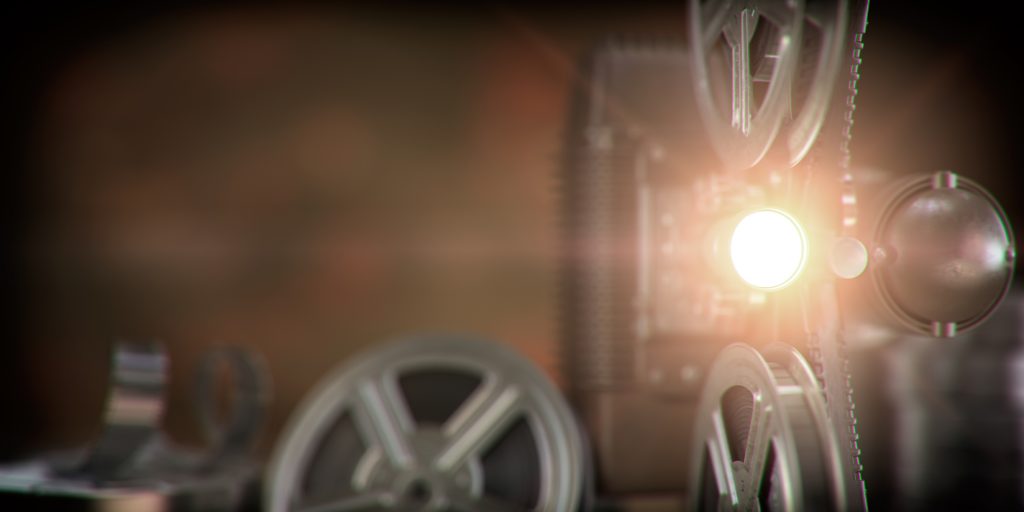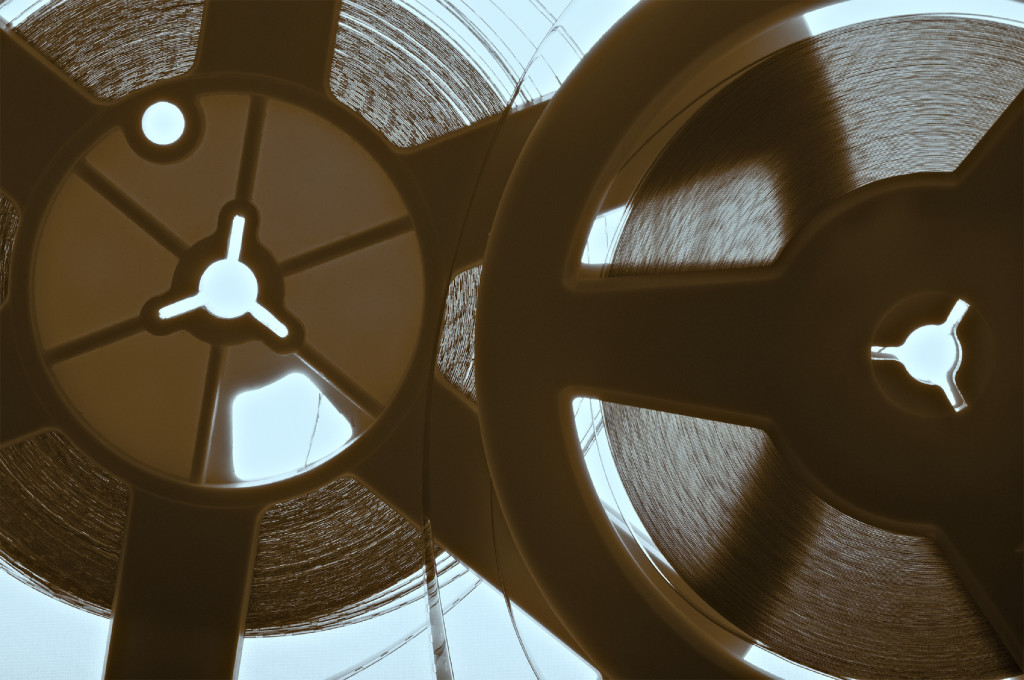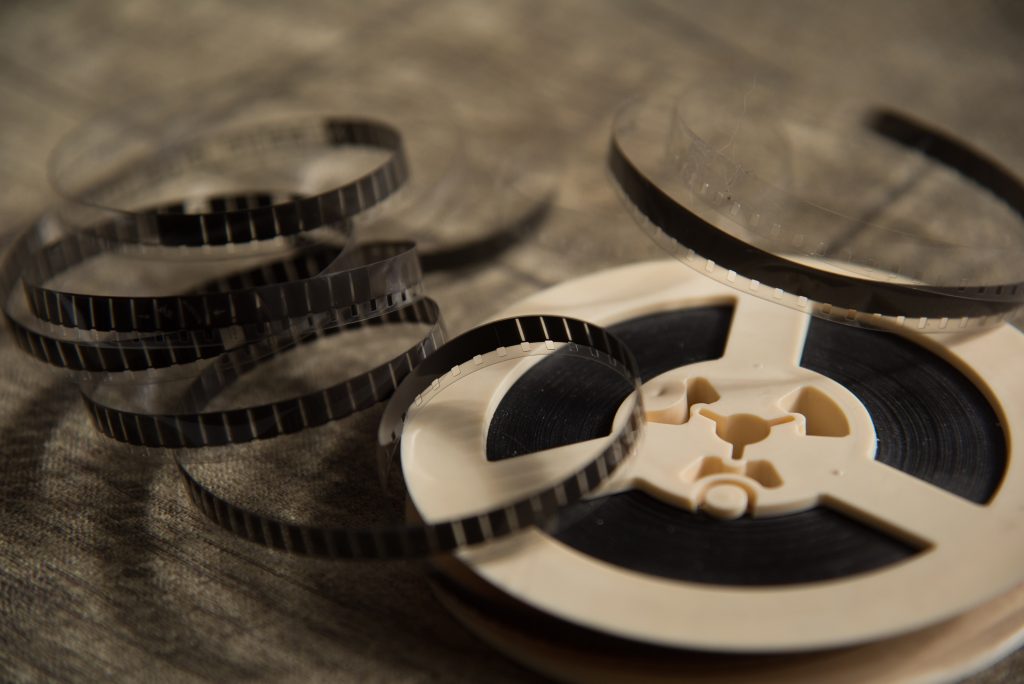Cine film refers to the picture film formats used for home videos. The different kinds of cine film are named for their width size in millimetres, with 8mm, Super 8mm, 9.5mm and 16mm being the most popular.
Here is a look at the different types of cine film, and why you should convert them into a digital format and how Cine2DVD can help with that.

8mm Cine Film
8mm cine film, also known as Regular 8mm or Standard 8mm, is a film strip 8mm wide. It was initially developed by Eastman Kodak and released in 1932 as a home movie format that was a less expensive format than 16mm. 8mm was sold in spools of 16mm film, but as this film had twice as many perforations on its edges, the film passed through cameras twice. This allowed the film to expose along half its width on the first pass, and then be flipped and exposed on the other side. When developed, the film was cut in half, resulting on two lengths of 8mm film.
The sprocket holes on 8mm film run along the edges and are in a rectangular shape. This film cannot record sound as it lacks a magnetic sound strip. 8mm was largely discontinued in the 1990s, but many people will still own home movies filmed on this format.
Super 8mm Cine Film
Super 8mm cine film was introduced in 1965, also by Eastman Kodak, and was considered an improvement over the Regular 8mm. This film is also 8mm in width, as the Regular 8mm, but the rectangular sprockets along one edge are smaller, which ensures a greater exposed area. This allows the border opposite the perforations to have an oxide strip which can be used to record sound magnetically.

9.5mm Cine Film
9.5mm cine film is used in amateur film making and was introduced by Pathé in 1922. It was initially an inexpensive format that could provide copies of commercially made films to people at home, but then a simple camera was released shortly after. It became a very popular format over the next few decades and continues to be used by some today.
The film is 9.5mm in width and uses a single, central sprocket hole between each pair of frames, as opposed to having its perforations along its edges. The singe hole allows more of the film to be used for the actual image, but it is invisible to viewers as the intermittent shutter blocks the light as the film is pulled through. 9.5mm film would typically be silent but could be in colour or black and white.
16mm Cine Film
16mm cine film is a popular film format that is generally used for filmmaking or low-budget motion pictures. Eastman Kodak first released it in 1923, and it measures 16mm in width. It was originally a less expensive alternative to the 35mm film for amateurs. Still, by the 1930s it was used extensively for educational material, such as during World War II and in the post-war years.
The advent of television production also boosted its usage, as it had advantages of cost and portability over 35mm. 16mm was used extensively in television production in many countries before the portable video cameras appeared. Sprocket holes run along both edges of 16mm film and on some there would be either a magnetic strip or an optional soundtrack.
Kodak and Agfa still supply 16mm film today, and it has been used in modern-day productions including The Walking Dead and Doc Martin.
Why You Should Convert to Digital
While film enthusiasts love their cine film, there is no denying that it is a very delicate thing that can break, split or degrade over time. If you have some old home movies sitting away in your attic, only being brought out every few years to be played on the dusty projector, you might want to consider getting that footage updated onto a digital format.

When you transfer cine film to DVD, you benefit from the longevity that digital formats can offer. You don’t have to worry about your footage becoming unplayable or damaged over time when you have a DVD or MP4 copy; you can rest assured that you will still have access to your footage, even if your cine film degrades.
We have many years of experience doing digital frame by frame scanning, giving you top-quality service and good value for money. Better still, we will even ship your cine reels back to you along with your new DVD, so you can always keep them and use them as much as you like, but with a safe back-up copy should the worst happen. Contact us today to find out more about how we can convert your cine film into a digital format.
